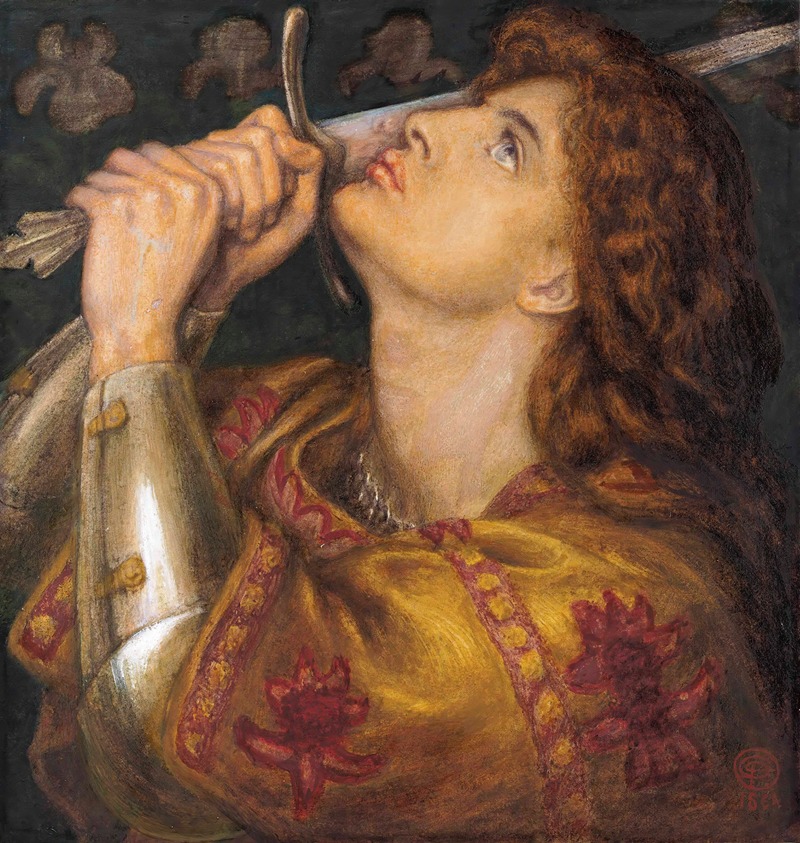

The Hero’s Journey: How Joseph Campbell’s Framework Can Inspire Your Next Big Project
Summary
This article explores each stage of the Hero’s Journey and connects it to the professional challenges, transformations, and triumphs experienced in ambitious business projects. By embracing each phase, women can gain confidence, resilience, and purpose, ultimately bringing their newfound wisdom back to inspire others.
Reflection Questions
- Which current project or challenge in your life could represent a “Call to Adventure”?
- Which fears or doubts hold you back, and how might they reflect a “Refusal of the Call”?
- Who or what can serve as a mentor or source of guidance to help you on your journey?
Journal Prompt
Reflect on a recent challenge you faced in your career. Identify where it aligns with a stage of the Hero’s Journey, and consider what you learned. How did this experience shape your resilience and confidence moving forward?
Stories have a way of resonating deeply with us—often because they mirror our own journeys of growth, challenges, and transformation. One of the most powerful storytelling frameworks is Joseph Campbell’s Hero’s Journey. His concept has shaped countless myths, fairy tales, books, and movies. But the Hero’s Journey also reflects the arcs of our own lives and can offer valuable insights into any transformative experience—including our biggest business projects.
Campbell’s mythic structure can offer the “heroines” reading this article a meaningful way to approach ambitious projects with confidence, navigate the inevitable obstacles, and emerge stronger and more capable. By seeing each phase of a project as part of a journey, we can find clarity, build resilience, and embrace each step as an important piece of our own story. We encourage you to romanticize your everyday life by viewing it through Campbell’s “hero’s journey” lens.
What You Should Know About Joseph Campbell and “The Hero’s Journey”


Joseph Campbell’s concept of the Hero’s Journey, sometimes called the “monomyth,” is a storytelling framework that identifies universal patterns in the narratives of cultures worldwide. In his 1949 book, The Hero with a Thousand Faces, Campbell outlined a series of stages that nearly every hero encounters on their journey. Campbell identified 12 stages that heroes typically go through, from the initial “call to adventure” through challenges, triumphs, and ultimately returning to the world transformed.
His work revealed that, while each culture has unique myths and heroes, they share a common story structure—a sequence of steps that resonate deeply with human experience and the nature of transformation.
How the Hero Journey Starts
The Hero’s Journey begins with what Campbell calls the Call to Adventure, where a character feels drawn or compelled to leave their ordinary world and undertake a challenge or journey. Often, the hero begins by refusing this call, facing doubts, fears, or responsibilities that hold them back.
However, with guidance from a mentor or source of wisdom, the hero eventually commits to the adventure. They cross the Threshold, leaving behind the familiar. The hero ventures into the unknown and sets out on a mysterious adventure, through which they undergo significant character development.
Along the way, they encounter trials, allies, and enemies that test their resilience and bring them closer to their goal. This journey often culminates in a major ordeal—a challenge that requires the hero to face their deepest fears, symbolizing a kind of “death” and rebirth. After this critical moment (often a final battle), they emerge with new insights or powers.
Fuel your creative fire & be a part of a supportive community that values how you love to live.
subscribe to our newsletter
*please check your Spam folder for the latest DesignDash Magazine issue immediately after subscription


Achieving the Ultimate Goal
The last steps of the Hero’s Journey see the hero returning to their world transformed, carrying “the elixir,” a gift or knowledge gained through their trials, which they bring back to share with their community. This return marks the final stage of the hero quest and his transformation, benefiting others as well.
For Campbell, this cycle of adventure, transformation, and return mirrors not only the structure of stories but the challenges and growth patterns of our own lives. By viewing life’s obstacles through this lens, Campbell believed we could see our personal journeys as meaningful narratives filled with lessons and resilience that shape who we become.
Campbell’s framework has become a cornerstone of storytelling in literature, film, and beyond, with stories like Star Wars drawing directly from it.
What This Means for Us


Campbell believed that these myths reflect a natural pattern of human experience, not just fictional narratives. He suggested that we could all see our personal challenges and transformations through the lens of the Hero’s Journey, allowing us to find deeper meaning in our struggles and triumphs.
The Hero’s Journey can indeed be a powerful tool for personal growth, encouraging us to see our own challenges as part of a larger journey toward transformation and wisdom. Whether we’re embarking on a new business venture, creating art, or navigating personal growth, Campbell’s Hero’s Journey offers a lens through which to see each trial, mentor, and success as an essential piece of a meaningful journey.
How to Take a Heroine’s Journey in Your Professional Life
Step 1: Listen for a Call to Adventure


The Call to Adventure marks the start of any hero’s journey, a point where the hero ventures out of the “ordinary world” in response to a mysterious adventure or challenge. Joseph Campbell describes this moment as the hero’s first step into a bigger story, often sparked by something intriguing or unusual that disrupts normal life. For a hero, this is often a summons to leave behind comfort and enter the unknown, sometimes introduced by what Campbell calls a “benign or malignant agent” that prompts the journey.
In business, the Call to Adventure mirrors that compelling urge we feel toward something bigger than our usual tasks—a significant project or role that speaks to our personal ambitions and goals. This call can be a sudden idea or an emerging opportunity, a sense that we are on the brink of something new. For women in business, this might look like the chance to start a passion project, expand a brand, or take on a leadership role, signaling the start of a new “hero quest” within the professional world.
Actionable Tip
Identify what excites you but also feels a bit intimidating. To start your hero’s journey, take a moment to identify the projects that inspire you and challenge you to grow. Consider what stepping fully into this endeavor would look like. Would it involve taking on a larger role, connecting with mentors, or venturing into a new market? By visualizing this step, you can make the idea feel more tangible.
Step 2: Address Your Own Self-Doubt


Refusing the call is a natural part of the hero’s journey, reflecting our reluctance when stepping into something unknown. Campbell writes that heroes often hesitate or resist the journey initially, held back by fear, doubt, or the appeal of everyday life. This initial pushback is common as heroes feel tethered to their everyday world, uncertain if they’re ready to face the unknown challenges.
In business, this reluctance often stems from imposter syndrome, time limitations, or the daunting thought of balancing life, family, and career. Women, in particular, may feel pulled in many directions, making it easy to doubt whether this call to adventure is even practical. This hesitation is often rooted in self-doubt, uncertainty about stepping into a bigger role, or feeling unprepared.
Actionable Tip
Write down the fears that come up when you think about stepping into this new project or challenge. Fear is often a part of any big step, so identifying these feelings is an essential way to address them. By bringing your fears to light, you can approach them practically and take small steps to address the obstacles they represent.
Step 3: Accept Guidance and Support
Heroes rarely succeed on their own; guidance is essential. At this stage, a mentor figure often appears to help them navigate the transition from the ordinary to the extraordinary. Whether it’s through advice, wisdom, or practical training, this mentor provides the insight needed for the hero to move forward. In stories, this might be a supernatural helper or guide, someone who introduces the hero to what lies ahead and offers support.
In business, mentors can be found in many forms, from coaches to colleagues to authors who inspire through their words. For women in business, a mentor can be a beacon of encouragement, helping you move past self-doubt and embrace the opportunities ahead. Campbell’s framework reminds us that support is available, even if it’s a resource, a book, or an online community that offers guidance and motivation.
Actionable Tip
Reach out to someone you admire or find resources that could support your journey. By connecting with a person or resource that inspires you, you gain a sense of support and validation. Even reaching out for a quick coffee chat or diving into a book on business leadership can provide new insights and confidence to keep moving forward.
Step 4: Cross the Threshold


Crossing the threshold is the hero’s first true commitment to the journey. It’s the moment when the hero makes the leap from the familiar and “crosses” into the unknown, leaving their ordinary world behind. In Campbell’s monomyth, this step symbolizes a point of no return, where the hero has committed to the path ahead, for better or worse.
In business, this is often the decision to fully invest in a new project or idea, moving beyond planning and committing to action. For a woman starting a new business or expanding a brand, crossing the threshold could mean launching a new service, pitching to investors, or even quitting a day job.
Actionable Tip
Define one concrete step to move forward. This could be making an announcement, sharing your project idea with others, or setting up a timeline. The goal is to solidify your commitment, taking that first real step into the unknown.
Step 5: Face Minor Obstacles with Honor and Tenacity


Trials are inevitable as the hero faces the central conflict of the story, testing their courage, resilience, and commitment. These trials teach the hero about their strengths and limitations, encouraging growth through each test. Campbell refers to this as a perilous path where the hero faces obstacles, encounters allies, and learns from failures.
In the professional world, challenges can come from within or outside. Women in business may face obstacles like lack of resources, the pressure of rejection, or burnout—each a form of enemy that threatens progress. Allies are also essential at this stage, whether they’re team members, friends, or family who provide support during tough times.
Remember, every hero fails at some point but they recover and continue on!
Actionable Tip
Reflect on recent challenges and how you overcame them. Take note of who or what helped you through. These resources can support your current project, offering strength and guidance when needed.
Step 6: Prepare for a Major Milestone
As the hero moves forward, they prepare for the ultimate challenge, gathering resources and support for the “final battle.” In Campbell’s structure for hero myths, this is the approach where the hero steps closer to their goal, readying themselves for what lies ahead. It’s a critical moment of preparation and strategy.
In business, this stage mirrors preparing for a major milestone—a product launch, a big presentation, or an investor pitch. This preparation period is key to building the confidence needed to face significant challenges. Breaking down goals and tasks, strategizing, and gathering resources help create a path to success.
Actionable Tip
Break down your biggest goal into manageable steps, making a timeline for each part. The aim here is to build confidence and ensure you’re well-prepared when you face the biggest challenge of your project.
Step 7: Dig Deep to Weather Huge Obstacles and Emerge Victorious!


The ordeal is where the hero faces their supreme ordeal, the greatest fear or challenge of the journey. Campbell describes this as the point where “fabulous forces” test the hero’s strength, facing the possibility of failure. It’s a moment where everything feels at stake, and the hero’s survival often depends on overcoming this trial.
In a professional context, this could be a funding crisis, a major loss, or an unexpected setback that challenges everything you’ve worked for. Facing this challenge forces you to confront personal limitations and dig deep to find resilience and problem-solving abilities.
Actionable Tip
Think back to previous challenges you’ve overcome and remind yourself of your resilience. Recognizing past wins helps reinforce that you have the strength to face the current challenge, no matter how difficult it seems.
Step 8: Reap The Reward


After the ordeal, the hero receives the reward—an insight, achievement, or gift that symbolizes their growth. This reward signifies transformation, a newfound confidence, or wisdom gained through hardship. Campbell sees this as a validation of the hero’s journey, proof that the struggle was worthwhile.
In business, the reward can come in many forms: a successful launch, a positive review, or simply the knowledge that you’ve grown and learned. Celebrating these wins, no matter how small, reinforces progress and helps sustain motivation.
Actionable Tip
Take time to recognize your wins, big or small. Write down the lessons you’ve learned and the progress you’ve made, as each step forward deserves to be acknowledged.
Step 9: Reflect on Lessons Learned


With new knowledge and insight, the hero begins the journey back to the ordinary world, transformed and ready to share their lessons. Campbell describes this as the road back, a transition where the hero now returns to normal life, prepared to integrate their new wisdom.
In business, the road back could mean applying what you’ve learned to improve your work or share your knowledge with others. The journey back from a project is a time to reflect on the lessons learned, using them to enhance future endeavors.
Actionable Tip
Document key lessons from this project and think of ways to apply them to future work. Whether through notes, reflections, or conversations with others, these insights can guide future decisions.
Step 10: Prepare for Your Next Project with Renewed Purpose
The resurrection is the final stage of transformation, where the hero is reborn with new strength and purpose. This stage represents the culmination of the journey, where the hero has integrated their new skills, insights, and strengths, ready to face the future.
For women in business, the resurrection could mean a newfound confidence or a deeper understanding of your work and purpose. This final stage of transformation allows you to step forward with renewed energy and drive, carrying the lessons of the journey into future projects.
Step 11: Share Your Insights with Others


The journey concludes as the hero returns with the elixir, a gift or insight to benefit others. Campbell’s monomyth ends with the hero’s return, symbolizing the wisdom they bring back to share with their community. This “elixir” benefits not only the hero but their entire community.
In business, this final stage is an opportunity to support others, inspiring them with what you’ve learned. Whether by sharing your journey, mentoring, or simply leading by example, your experience can encourage others to pursue their own goals.
Actionable Tip
Think of one way you can give back or support others with what you’ve gained. Sharing your insights can be just as rewarding as achieving your own goals, amplifying the impact of your journey.
Final Thoughts on Taking a Heroine’s Journey


Every project, every challenge, and every step you take is a powerful part of your personal Hero’s Journey. As you reflect on your own path, recognize that each stage—the excitement, the doubt, the trials, the victories—carries its own unique wisdom, shaping who you are and what you bring to the world.
Remember, by embracing this journey with courage and resilience, you are not only fulfilling your own potential but also inspiring others to do the same. As you consider your current project or your next big goal, view it through the lens of the Hero’s Journey.
Embrace each phase, each triumph, and each setback, knowing that they are all part of a transformative process that makes you stronger and more capable. Every step forward is a testament to the strength, creativity, and impact you have as a heroine in your own story.








